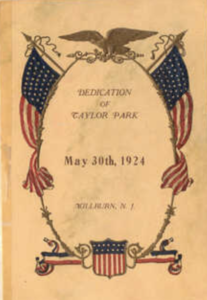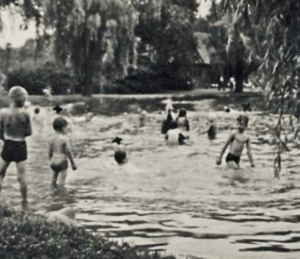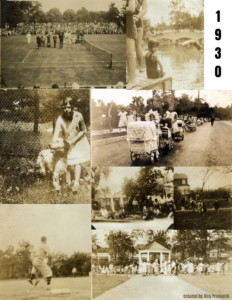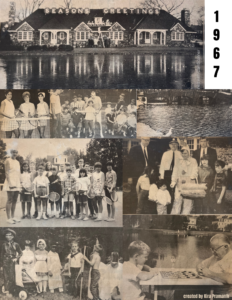The History of Taylor Park by Ed Marks and Kira Pramanik
“This is your Park. Care for it, protect it, and guard it.”
Those words were spoken at the dedication of Taylor Park on Memorial Day 1924, and the people of Millburn and Short Hills clearly listened. Today, more than 100 years later, the park remains a place of natural beauty and a thriving hub of community activity.

Taylor Park dedication program from the Historical Society archive
The land wasn’t always so appealing – at least to humans. In the early 1800s, ponds and marshes covered the area, providing tasty treats for grazing livestock from nearby farms.
This bucolic picture would soon change with Millburn’s industrial development. Although mills had begun to appear in the late 1700s, the arrival of the railroad in the 1830s dramatically spurred the growth of more mills and businesses. Residential development soon followed. By the 1870s, the Wyoming section and Short Hills were attracting new homeowners.
As Millburn grew in prosperity and prestige, so did concerns about health and hygiene. A Board of Health was formed in 1887, swamps and ponds were drained to help control malaria, and there was new interest in creating public parks. Thanks in part to a fortune made in Kansas City, Mo., Taylor Park became one of those.
John Taylor was a Kansas City businessman who made a fortune selling dry goods. He and his wife, Gertrude Riner Taylor, moved to Millburn in the early 1900s and were active philanthropists. In 1918 they gave the house at

Swimming in Taylor Park Pond circa 1946
12 Taylor Street to the Neighborhood Association of Millburn Township, a group founded by Joanna Hartshorn to help the needy. The building is still there, home to the Neighborhood House Nursery School.
After her husband’s death in 1919, Gertrude decided to use part of her inheritance to create a park for the community and to honor her husband. She bought 13 acres from Elizabeth Whittingham for $40,000. Mrs. Taylor also paid to have the remnants of mills on the land cleared, and hired the renowned landscape architectural firm Brinley & Holbrook to design the park.
John R. Brinley, the lead designer of the firm, worked closely with Central Park co-designer Frederick Law Olmstead, and went on to design the New York Botanical Garden. As a resident of Morristown, Brinley also did extensive work in New Jersey, earning acclaim for designing the Morristown Green, Maplewood Memorial Park and many other public projects. With the plans underway, the Millburn Shade Tree Commission was formed to help supervise work on the park.
Taylor Park was dedicated in gala ceremonies on May 30, 1924, when the President of the Millburn Board of Education, Dean Emery, urged people to care for “your Park.” A plaque on a rock at the Millburn Avenue entrance notes the event. Ten years later, a fieldhouse was built where the George Bauer Community Center now stands. It was made of stone donated by Stewart Hartshorn, and expanded in 1957. Destroyed by fire in 1971, it was rebuilt in 1973. The oldest remaining structure in the park is at the corner of Main Street and Ridgewood Road, and is occupied by the Millburn Cooperative Nursery School.
If there were ever a gift that keeps on giving, it is Gertrude Taylor’s gift to the Township of Millburn. Longtime residents fondly recall swimming and skating at the park’s pond, and today, for activities from baseball to tai chi, or a snooze on the lawn or town-wide events like Fourth of July celebrations and summer concerts, Taylor Park, a gem in 1924, continues to sparkle.

